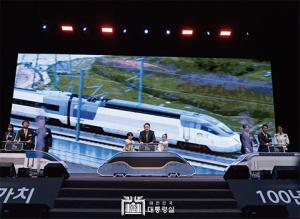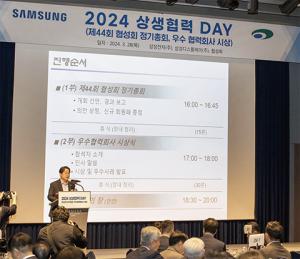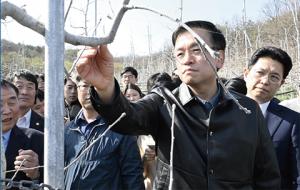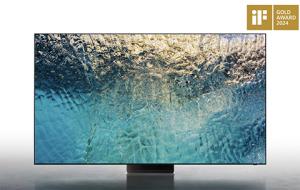세계가 인정한 전통문화체험관광브랜드 ‘전주한옥마을’
한 해 1,000만 명이 찾는 대한민국 대표관광명소로 우뚝
관광 분야의 위상을 드높이며 한국관광 100선을 3회 연속 수상한 가장 한국적인 도시 ‘전주’, 전주의 심장부에는 대한민국에서 가장 보존이 잘 된 전통마을이 있다. 세계적인 여행 바이블 론리 플래닛이 선정, 아시아 3대 관광명소에 등극하며 미국 CNN에도 소개된 ‘전주한옥마을’이 바로 그 곳이다. 여행작가들이 직접 아시아 각국의 여행지를 돌아본 뒤에 발표된 이 리서치에서 전주한옥마을은 일본 훗카이도, 중국 상해와 함께 전 세계 관광객들이 반드시 방문해야 할 만한 매력과 가치가 있는 명소임을 입증 받았다. 뿐만 아니라 전주한옥마을은 2017년 2월에 개최된 ‘2017 대한민국 고객만족·브랜드 경영대상’에서 전통관광지 부문 대상을 수상하며 국내 대표 브랜드 관광지로서의 가치도 함께 인정받았다.
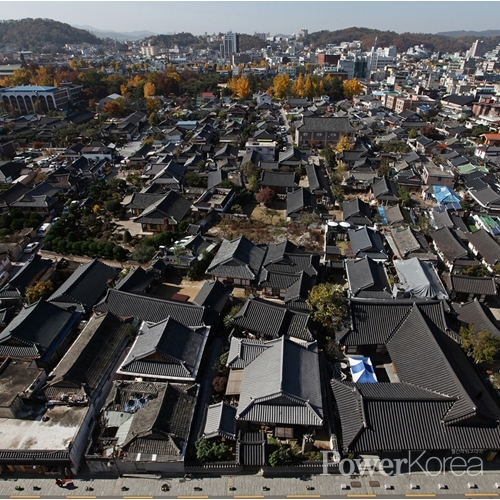 |
가장 한국적인 전통문화도시 ‘전주’
전주는 900년 견훤이 세운 후백제의 수도이자, 조선왕조 오백 년을 꽃피운 역사의 중심이 되어온 도시이다. 조선시대에는 전라도 전 지역과 제주도까지 관할했던 전라도의 실질적 수도이자 행정 중심지로서 큰 역할을 담당했던 곳이기도 하다. 우리나라에서 역사적으로 나라의 수도였던 도시가 여섯 개소에 지나지 않았다는 점을 감안한다면 전주는 도읍지의 요건을 갖춘 완벽한 도시 면모를 예전부터 갖추고 있었음을 알 수 있다.
전주는 익히 알려졌듯 2012년 유네스코가 지정한 ‘음식 창의도시’이자 ‘판소리의 본고장’이다. 전통생활양식의 근간인 한옥, 한식, 한지 등 가장 한국적인 전통문화를 담고 있는 전주는 주변의 드넓은 평야와 바다로 연결되는 천혜의 지리적 조건을 갖춰, 일찌감치 풍요의 고장으로 인정받았다. 특히, 전주시가 전통문화를 대표하여 국제슬로시티로 지정 받은 이래, 2010년 전주한옥마을이 관광시설 부문에서 문화체육관광부로부터 ‘한국관광의 별’을 수상, 2011년 한국관광 으뜸명소, 2012년 행정자치부로부터 브랜드세계화 시범사업 지역에 선정, 2015년에는 국내 내륙지역 인기여행지 1위로 선정되는 등 한국전통문화의 중심지로서 브랜드 가치를 높이고 있다.
전주의 랜드마크, 전주한옥마을
전주시는 그간 ‘전통문화도시 전주’를 대한민국을 대표하는 국제적 문화관광도시로 육성시키기 위해, 전주한옥마을을 비롯한 전주 원도심 일대를 ‘아시아 문화 심장터·글로벌 문화도시’로 조성할 수 있는 기본계획을 수립해왔다. 앞서 논했듯, 한국적 스타일을 중심 키워드로 전통문화체험관광 브랜드가치를 높이며 전주 고유의 개성과 전통문화 자원을 활용한 창조적 문화산업을 펼쳐온 전주시는 전주한옥마을을 국제적 브랜드로 성장시켰다.
전주한옥마을은 가장 한국적인 문화를 볼 수 있는 전주의 랜드마크다. 700여 채의 한옥이 빼곡하게 군락을 이룬 전주한옥마을은 전국 유일 도시한옥군으로서 경기전, 오목대, 향교 등 중요 문화재와 문화시설이 산재되어 있어, 전주만의 독특한 생활문화공간을 자랑한다.
많은 여행객들이 전주한옥마을을 찾아 가장 먼저 오르는 곳은 ‘오목대’라고 한다. 기린로에서 태조로 입구 좌측 편 산책로에 위치한 오목대는 조선왕조를 개창한 태조 이성계가 황산대첩에서 왜구를 물리치고 개경 개선길에 들러, 잔치를 베풀었다는 곳으로 알려져 있다. 또한, 오목대에서 한옥마을을 보면 좌측 편에 전동성당과 경기전을 함께 만나볼 수 있다. 그런가 하면 매년 가을, 노란 은행잎으로 뒤덮이는 전주향교는 국내 향교 가운데 가장 온전히 보존된 향교로서 으뜸으로 손꼽히고 있다. 고려시대에 창건되었다고 전해진 전주향교의 현재 건물은 조선 선조 때 건립되었다고 전해지며 2010년 KBS2 드라마 ‘성균관 스캔들’의 촬영지로 유명세를 타기도 했다.
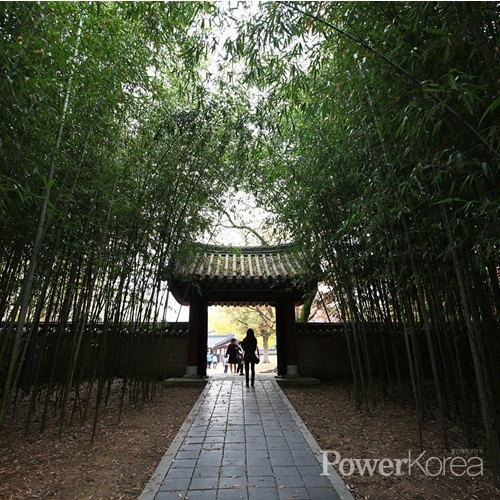 |
| ▲ 경기전 대나무숲 |
2020년까지 로마와 파리를 뛰어넘는 위대한 문화도시로 성장시킬 것
민선 6기 시작부터 전주를 ‘좋은 도시’에서 ‘위대한 도시’로 만들기 위한 프로젝트에 적극 착수해왔던 김승수 시장은 전주시가 자치단체의 문화활동과 문화향유 정도를 측정하는 지역문화지수 전국 1위를 달성하도록 진두지휘 하는 등 전통문화를 중심으로 새로운 문화예술 거점을 조성시키는 것에 최선을 다해왔다. 특히, 국가예산 등 200억 원을 확보함과 동시에 전통문화 중심의 도시재생사업을 추진하여 전라감영 재창조 복원, 전주동학농민혁명 역사문화벨트 조성, 원색장 농촌관광거점마을 조성 등을 통해 새로운 문화관광거점으로 육성시킨 점은 매우 높이 살 만하다. 한편, 김승수 시장은 “문화콘텐츠의 발굴 및 적용이 지역경제의 성장으로 이어지는 상생의 문화경제구조를 만들 계획입니다.”라고 밝힌 바 있으며 “전주한옥마을을 중심으로 지역 내 역사문화자원에 기반한 권역별 맞춤형 정책을 추진하여 오는 2020년까지 로마와 파리를 뛰어넘는 위대한 문화도시로 성장시킬 것입니다.”라고 포부를 드러냈다.
한편, 전주시는 사람과 자연이 공존할 수 있는 지속 가능한 생태도시를 지향하는 ‘생태도시 종합계획’을 마련하여 전주 온통 숲 조성, 전주 생태동물원 조성을 진행하는 한편, 민간기업의 협조를 얻어 고속버스터미널 현대화 사업 완료, 전주 첫 마중길 사업 시장 조성 등 많은 시민들의 호응 속에 ‘전주 첫 인상프로젝트’를 전개시키고 있다. 전주시의 관계자는 앞으로도 전주시를 ‘아시아 TOP3 도시’로 새롭게 도약시키기 위해 전주부성 일원을 체계적으로 보전, 관리, 재생하기 위한 역사도심 기본계획 및 지구단위 계획을 수립하여 알맞게 적용시킬 예정이라고 밝혔다.
Globally recognized ‘JeonjuHanok Village’ attracts 10 million visitors a year
Jeonju, the most traditional Korean city
Jeonju was the capital of the Baekjue Kingdom established by GyeonHwon in 900. It functioned as the capital of Jeolla Province during the Josen Dynasty. As it is known already, Jeonju was appointed by UNESCO as a ‘Food Creative City’ and the ‘Home of Korean Opera’ in 2012. The city embraces the most traditional Korean houses, food and paper and the beautiful landscape is surrounded by the wide open fields that lead to the Western Sea (Yellow Sea). The city’s advantageous location and abundance were well known to the people long time ago in history. Since the city was yet again appointed as an International Slow City, JeonjuHanok Villagereceived2010 Korea Tourism Awards from the Ministry of Culture, Sports and Tourism. It was alsochosen for 2011 Korea Tourist Hotspot and2012 Global Brand Project by the Ministry of the Interior as well as 2015 No.1 Tourist Destination of the mainland Korea.
JeonjuHanok Village, the landmark of Jeonju
In order to turn Jeonju and the surrounding areas to a global culture and tourism city, the city has pushed forward ‘Asian Cultural City Project’ through a variety of cultural experience programs and local brands. So far, the first thing that visitors are eager to walk around when in the city is the famous JeonjuHanok Village. The 700 Korean houses including important cultural assets and facilities are creating a unique atmosphere within the center of the city. ‘Omokdae’ among the buildings in the village is the most popular drop by. You start from Kirin-ro and turn left at the entrance of Taejo-ro to find it. Omokade is known to be the place where Yi Seong-gye, the founder of Joseon, held a banquet for defeating the Japanese at The Battle of Hwangsan. Turn your eye to your left hand side to see Jeondong Cathedral and Gyeonggijeon Palace for a while. The village also is famous for yellow ginkgo leaf covering JeonjuHyanggyo, the best preserved Confucian temple in Korea,when you visit in the autumn. It was known to be built during the Goryeo Kingdom and refurbished in the Joseon Dynasty era. However, it became famous as a filming site of Sungkyunkwan Scandal, a KBS2 drama in 2010.
Making Jeonju more popular than Rome and Paris by 2020
The mayor Kim Seung-su has pushed forward the project to turn ‘Good Jeonju’ to ‘Great Jeonju’ since he took the office. He has exerted his utmost effort in achieving No.1 title of the local cultural index that measures the level of cultural activities of the region. He secured a 200 billion won budget while carrying out the urban regeneration project through which he fully recovered the traditional Jeolla Provincial Office, built the History and Cultural Belt of JeonjuDonghak Peasant Revolutionand the Onsekjang Rural Tourism Village. “I will create a win-win cultural and economic structure in the city through promotion of more cultural contents and makeJeonju more popular than Rome and Paris by 2020 through customized support for history and culture” said Kim in determination. Also, the city is working on ‘Ecological City Plan’ where people and nature can coexist in harmony while‘Modernization of Express Bus Terminal’ and ‘Jeonju Impression Project’, with support of private companies, are ongoing.An official of the city said that the city would bring up ‘Basic Plans for Historic City and District Promotion’ in order to grow the city as the ‘top city in Asia.
지윤석 기자 jsong_ps13@naver.com

